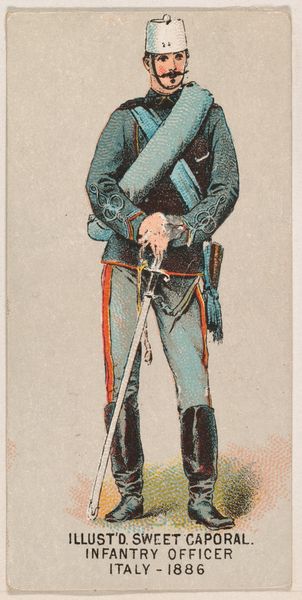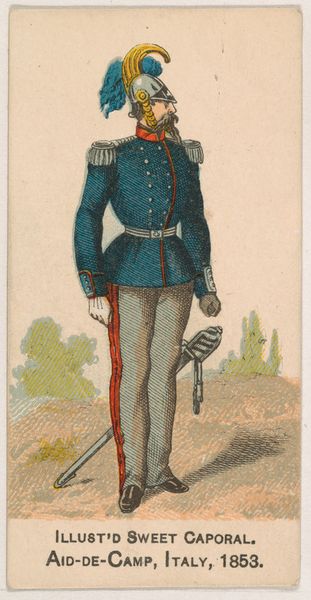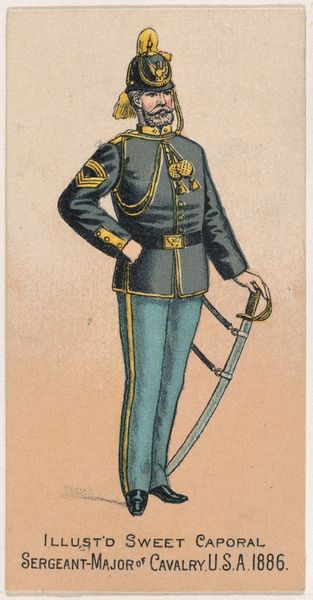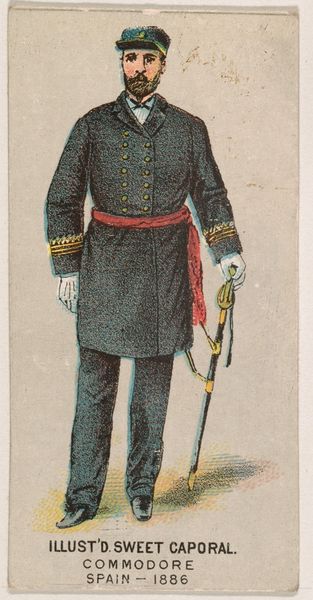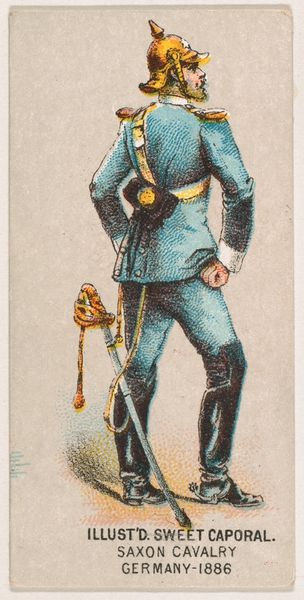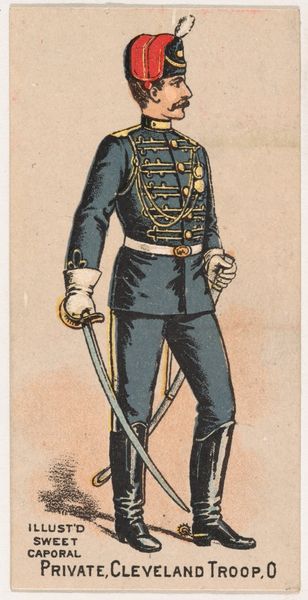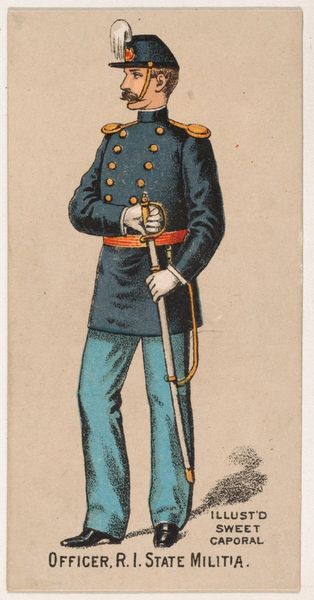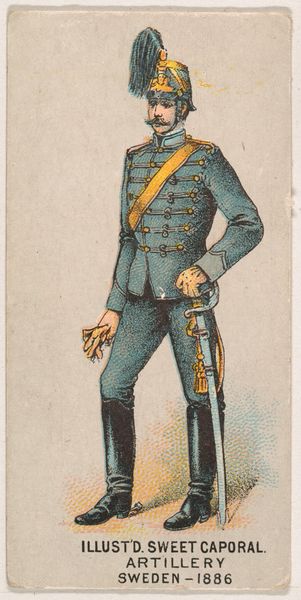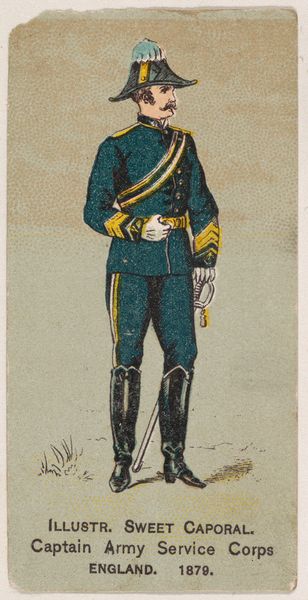
Artillery, Italy, 1883, from the Military Series (N224) issued by Kinney Tobacco Company to promote Sweet Caporal Cigarettes 1888
0:00
0:00
drawing, coloured-pencil, print
#
portrait
#
drawing
#
coloured-pencil
# print
#
coloured pencil
#
ink colored
#
men
#
sketchbook drawing
#
genre-painting
#
profile
#
realism
Dimensions: Sheet: 2 3/4 × 1 1/2 in. (7 × 3.8 cm)
Copyright: Public Domain
Editor: This is "Artillery, Italy, 1883," from the Military Series, a print made with colored pencils, created around 1888 by the Kinney Tobacco Company. It looks like an advertisement... Why portray this solitary figure of a soldier? Curator: Exactly. We need to look at how images like these served not just to sell cigarettes but also to normalize militarism and project colonial power. What does it mean to idealize the figure of a soldier in the context of 19th-century European expansionism? Editor: I see what you mean. The soldier appears strong and heroic, but you're saying that image served a much larger agenda? How does gender fit into that? Curator: Absolutely. Military prowess was often linked to masculinity, defining ideal manhood through service and conquest. The "Sweet Caporal" cigarette brand, by associating itself with such imagery, tapped into those deeply ingrained social constructions, didn't it? How does this affect our contemporary interpretation? Editor: That makes me see it in a totally different light! It's not just a historical portrait; it's a promotion of certain values connected to power and domination. It’s a bit unsettling once you consider the effect of this popular image-making! Curator: Precisely. And reflecting on this challenges us to consider how art, even in commercial forms, plays a critical role in shaping ideologies, especially concerning national identity, war, and masculinity. These types of prints aren't just products; they are reflections and drivers of social attitude. Editor: Wow, I never thought about an old advertisement holding so much historical weight. Now I understand the significance beyond just aesthetics. Curator: That’s the key – engaging with the art to unpack these layers. It enables us to see it through a broader, critical, and historically aware lens.
Comments
No comments
Be the first to comment and join the conversation on the ultimate creative platform.
